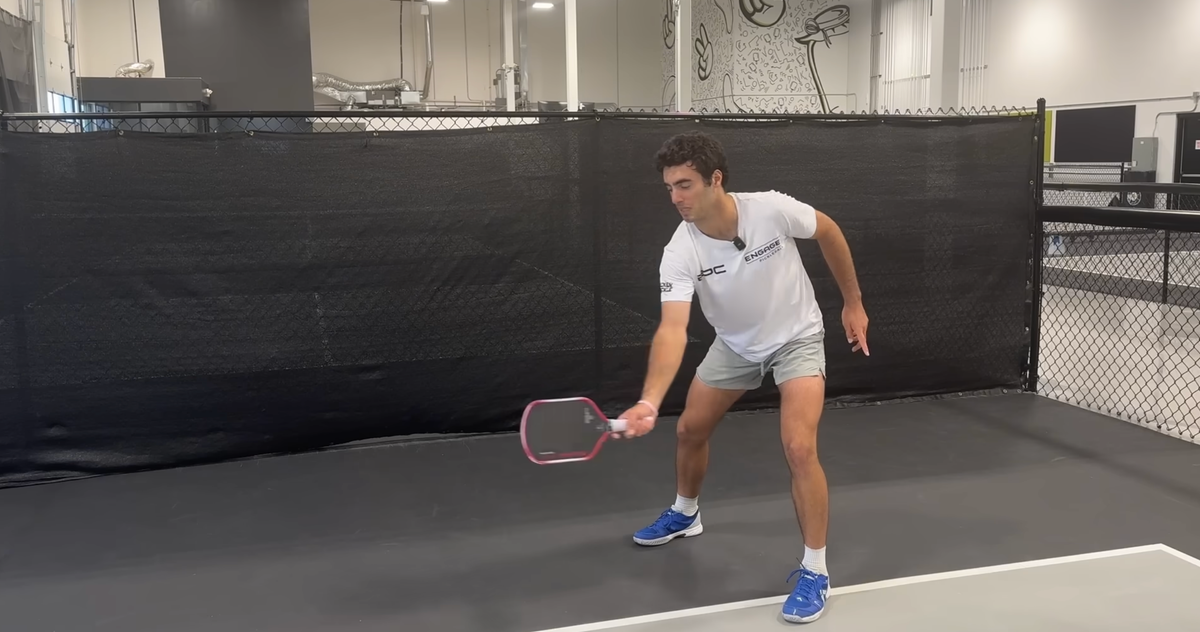
How to Hit 'The Kyle': The Sneaky Pickleball Shot That Makes Opponents Look Silly
It happens in an instant. If you're expecting it, it can still be difficult to defend. But if you're caught unaware? Forget about it.
You've likely seen it, probably faced it a time or two in rec play. You may have even attempted it yourself.
"The Kyle" pickleball shot is one of those sneaky weapons that separates players who know what they're doing from those who are still figuring things out.
In a recent short from Ed Ju, up-and-comer junior pro Maddox Castellanos shows you how to hit it – and why it can be such an effective offensive weapon when used correctly.
The Setup: It Starts Like a Normal Backhand Dink
The Kyle gets its name from Kyle Yates, one of the sport's earliest and most prolific pros, the guy credited with bringing Ben Johns into pickleball.
He's a pioneer through and through – and The Kyle isn't the only shot he's brought into the mainstream.
The Kyle begins like you're setting up for a regular backhand dink. You're holding your paddle, ready to take the ball, and you're bringing it back just like you normally would. Nothing fancy here.

At the last possible second, the moment before impact, you flip your wrist fully over and push the ball with the forehand instead. It happens in an instant. If you're expecting it, it can still be difficult to defend. But if you're caught unaware? Forget about it.
The key to hitting a successful Kyle is timing. You want to take the ball all the way back, holding that backhand dink position until literally the last second. That's when things get interesting. At that final moment, you have two options:
- You can either push the ball forward down the line from your backhand side
- Or you can switch to your forehand and push from there instead
It's this element of choice that makes The Kyle so effective. Your opponent doesn't know which direction you're going until you commit, and by then, it's too late for them to adjust.
Why This Shot Matters
In pickleball, consistency and predictability are usually your friends. But sometimes you need to throw in something unexpected to keep the other team off balance. The Kyle does exactly that.
By disguising your intentions until the last possible moment, you're forcing your opponent to react rather than anticipate.
They can't start moving toward the sideline or the middle until they see which way you're actually hitting it. That split-second delay is often enough to create an opening or force an error.
It's also a shot that works particularly well in the kitchen, where most of the action happens. You're already in close, already in that dinking range, so adding this little wrinkle to your backhand game can be the difference between winning and losing a rally.

The Learning Curve
The Kyle is not overly complicated, but it does take practice.
You don't need special equipment or a completely different stance. You're just adding a timing element and a directional choice to something you already know how to do. It's more about feel and repetition than anything else.
If you're looking to add this to your game, the best approach is to practice it during warm-ups or casual play before you try it in a competitive match. Get comfortable with the motion, understand how much power you need, and figure out which direction feels more natural for you.
The Kyle might not be the flashiest shot in pickleball, but it's the kind of subtle weapon that can elevate your game. It's not about hitting winners; it's about creating opportunities and keeping your opponent uncomfortable. And in a sport where margins are often razor-thin, that's exactly what you need.

Love Pickleball? Join 100k+ readers for free weekly tips, news & gear deals.
Subscribe to The DinkGet 15% off pickleball gear at Midwest Raquet Sports









